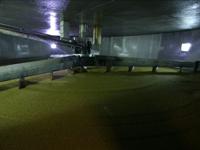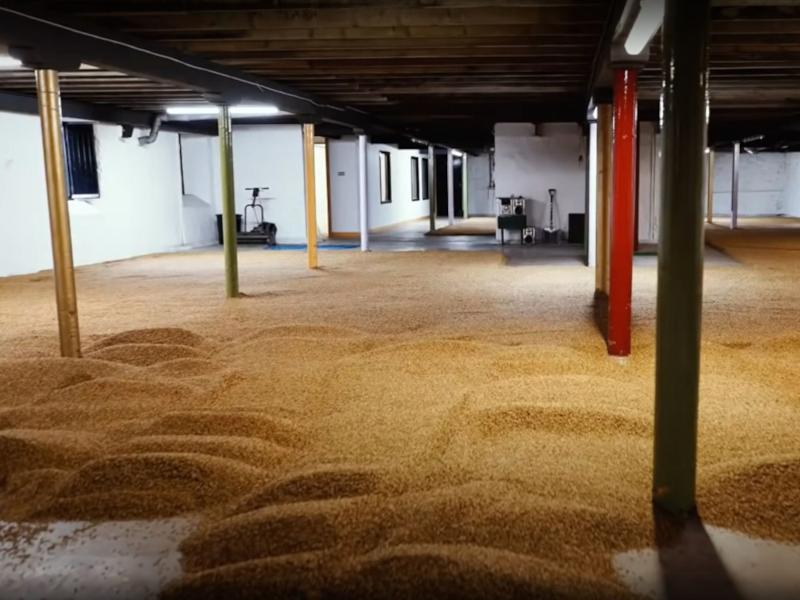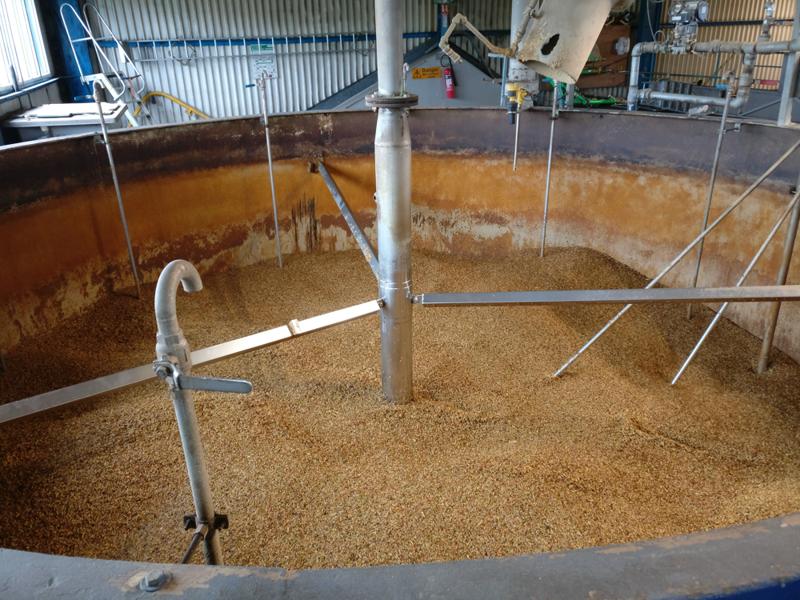TLDR
Commercial Enzymes in Whiskies
The production of whisky is dependant on the creation of beer, and its subsequent distillation. Enzymes utilization is one of the main pillars of the brewing industry and yet one of the most overlooked in the whisky making process. Depending where in the world a whisky is being made, this will either require the malting of barley, or the introduction of commercial enzymes to convert the grain starches into simpler sugars.The Long Read

Before whisky distillation can take place beer like liquid, commonly called wash, must be created. The creation of wash, brewing by another name, occurs when the sugars from the grain are extracted via hot water. The resultant sugary liquid known as mash is then combined with yeast, and fermentation takles place. The main difference is whether the sugar for fermentation is created from natural, or commercial enzymes.
What are Enzymes?
Enzymes are proteins that act as biological catalysts, which is to say that they convert molecules into other molecules. An example of this is the enzyme lactase, which breaks a lactose down into two glucose molecules. People who do not produce the enzyme lactase can’t process lactose and are thus lactose-intolerant. Enzymes play a vital role in food industry and have been utilized enormously in many different stages of food processing. From cheese making, meat tenderising to the reduction of maturation time in wine making and crucially for whisky; brewing.
How Do Enzymes Work?
Enzymes are made up of several thousand different amino acid chains that take on specific shapes for specific jobs. They join molecules together, take large molecules apart and rearrange molecules into something different. The molecule the enzyme acts on is called a substrate, the rate at which the chemical reaction occurs is determined by the temperature, pH and the concentration of the enzyme and substrate.
Enzymes From Malted Barley
It is virtually impossible to overstate the importance of malted barley for whisky production, single malt Scotch is made using 100% malted barley, as are a host of other whisky styles from Ireland to Japan and Australia. It plays a key role in the production of American bourbons and ryes among other, where it typically makes up 5% to 15% of a mash bill. The reason is Diastase.

What is Diastase?
Diastase is a mixture of naturally occurring amylase enzymes found in barley, these are activated during the germination process. By drying and kilning malt at the just right moment, malsters preserve the enzymes within malted grain which can then be used to convert the tightly packed starch into maltose or malt sugar. This is then in turn converted into yeast friendly sugar.
What Enzymes are Responsible For Malting
α-amylase and β-amylase are required for modifying the grains starches into various types of sugar. ß-amylase along with exo-peptidase and carboxy-peptidase are present in the starchy endosperm of the barley, and are activated during malting. a-amylase along with ß-glucanase, endo-proteases and pentosanases are formed in the aleurone layer of the barley during malting.
Why Is Malted Barley Added To Other Mash Bills
Malted barley has a ‘high diastatic power’ which means that it is so potent with enzymes that it acts as a catalyst inside the mash tun, converting any available starch, even those from other grains like unmalted barley, corn, rye, and wheat, into the sugars yeast need to produce alcohol. It is because of this diastatic power that Irish whisky distillers were able to sidestep a 1785 tax on the use of malted barley by simply using a percentage of unmalted barley.
What Are Commercial Enzymes?
All of the primary enzymes required for beer production, amylases (carbohydrate enzymes), proteases (protein enzymes), peptidases (which break down protein pieces into amino acids), and β-glucanases and xylanases (cellulose enzymes) can be sourced naturally from malted grains, (usually barley or wheat). However if a distillery is seeking to produce a 100% corn or rye whisky the low diastatic power of these grains will mean a very long mash and such a low alcohol yield that it may not be commercially viable. The answer lies with commercial diastase enzymes, products that replicate the diastatic power of malt.

Where are Commercial Enzymes Used?
If enzymes are being used for beer production their use is virtually unlimited. The use of commercial enzymes for distillation is banned in Scotland, though common practice in the United States and Canada.
Why are Artificial Enzymes Used?
Enzymes are widely used in beer production to either supplement the naturally occurring malt enzymes or to compensate for ingredients with lower diastatic power which may limit the amount of alcohol which can be produced. Many distillers (including large bourbon distillers, although few openly discuss the practice) rely in part on enzymes for their starch to sugar conversions.
Do Commercial Enzymes Impact the Flavour of Whisky?
Yes. While it only takes a small amount of these powerful compounds to transform a starchy, floury grain soup into sweet, yeast-friendly porridge ultimately, everything a distiller does makes a difference in the flavour of their final product. Some flavours will certainly be lost by dropping malted barley from a mash bill, some flavours will be gained by the increased composition of other grains and some of the flavour will almost certainly be imparted by the enzyme itself. Unfortunately without knowing which big brands use enzymes and which don’t, it seems impossible to say what impact these enzymes will have on flavour.
Some purists, including the Scotch Whisky Association, are unwilling to open the door to commercial enzymes, a position at odds with their continued acceptance of e150a. Others argue that the more powerful and predictable nature of commercially produced enzymes offer distillers greater control over their saccharification and consequently the flavour profile produced.
Benefits of Commercial Enzymes
Limitations of malt enzymes are that they can only work at certain temperatures, pH values, etc and the activities might be too low to do a proper job in proper time. But on the other hand, commercial enzymes can be designed to work at preferred temperatures and pH values, to have more enzymatic power, or to express wanted enzyme activities that are not present in malt.
The addition of exogenous enzymes makes the brewing process faster, more consistent and afford higher flexibility in the choice and quality of grains used. This in turn offers potential environmental and cost saving opportunities as additional value will be extracted from the raw materials already in use, potentially making it possible to use lower quality local raw materials, and unmalted grains, saving significant amounts on energy and transport. Ultimately it may only be a matter of time before commerical enzymes enter the Scotch whisky industry, but before they do more thorough debate and experimentaion is required.
FAQs
What enzymes are used for distilling?
The most important enzyme in this process is called amylase, which is responsible for breaking down the long chains of starch molecules into shorter chains of sugar molecules. Amylase is naturally present in grains, but is also often added in the form of enzyme preparations, which can help to improve the efficiency of the conversion process. Other enzymes, such as proteases and beta-glucanases, may also be used during the brewing process to break down proteins and other molecules in the grains, which can help to improve the clarity and flavor of the resulting beer.
Why are enzymes used in the production of alcoholic drinks?
Enzymes are commonly used in the production of alcoholic drinks, such as beer and whiskey, to facilitate the conversion of starches into sugars, and the subsequent fermentation of those sugars into alcohol. The enzymes used in this process, such as amylase and protease, are proteins that catalyze chemical reactions, and help to break down complex molecules into simpler ones. In the case of the production of alcohol, the enzymes help to break down the starch molecules in grains into simple sugars, such as glucose and maltose, which can then be fermented by yeast into alcohol. The use of enzymes in the production of alcoholic drinks can help to improve the efficiency and quality of the fermentation process, and ultimately produce a better-tasting and more consistent product.
Are commercial enzymes more efficient compared to malt sourced enzymes?
Yes. Commercial enzymes are produced by specialized companies for use in a variety of industries, including the food and beverage industry. These enzymes are often highly purified and standardized, and are designed to be highly efficient under a wide range of conditions. In contrast, malt-sourced enzymes are enzymes that are naturally present in grains, such as barley, that are commonly used in the production of beer and whiskey. These enzymes can also be efficient, but may not be as consistent or as effective as commercial enzymes in some cases. Ultimately, the choice of which type of enzyme to use will depend on the specific needs and requirements of the production process.
References
Previous
Next

